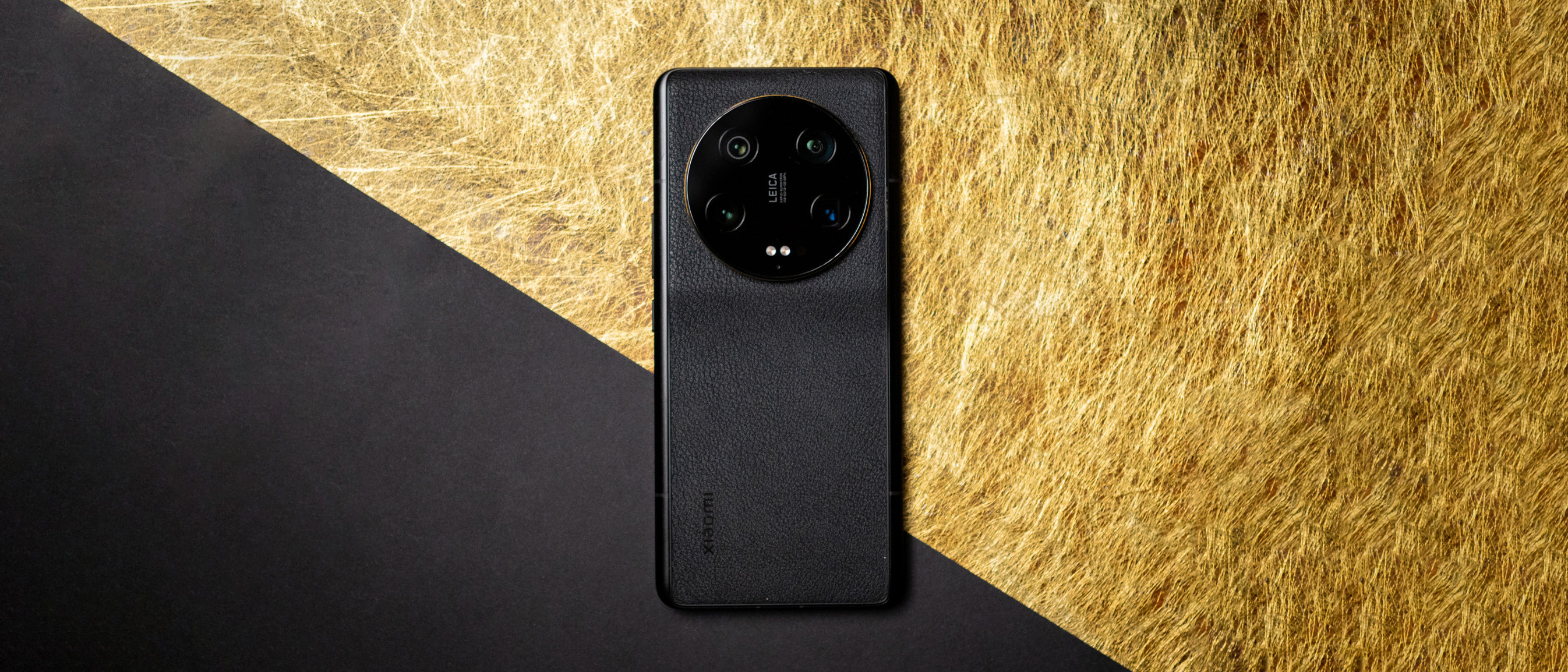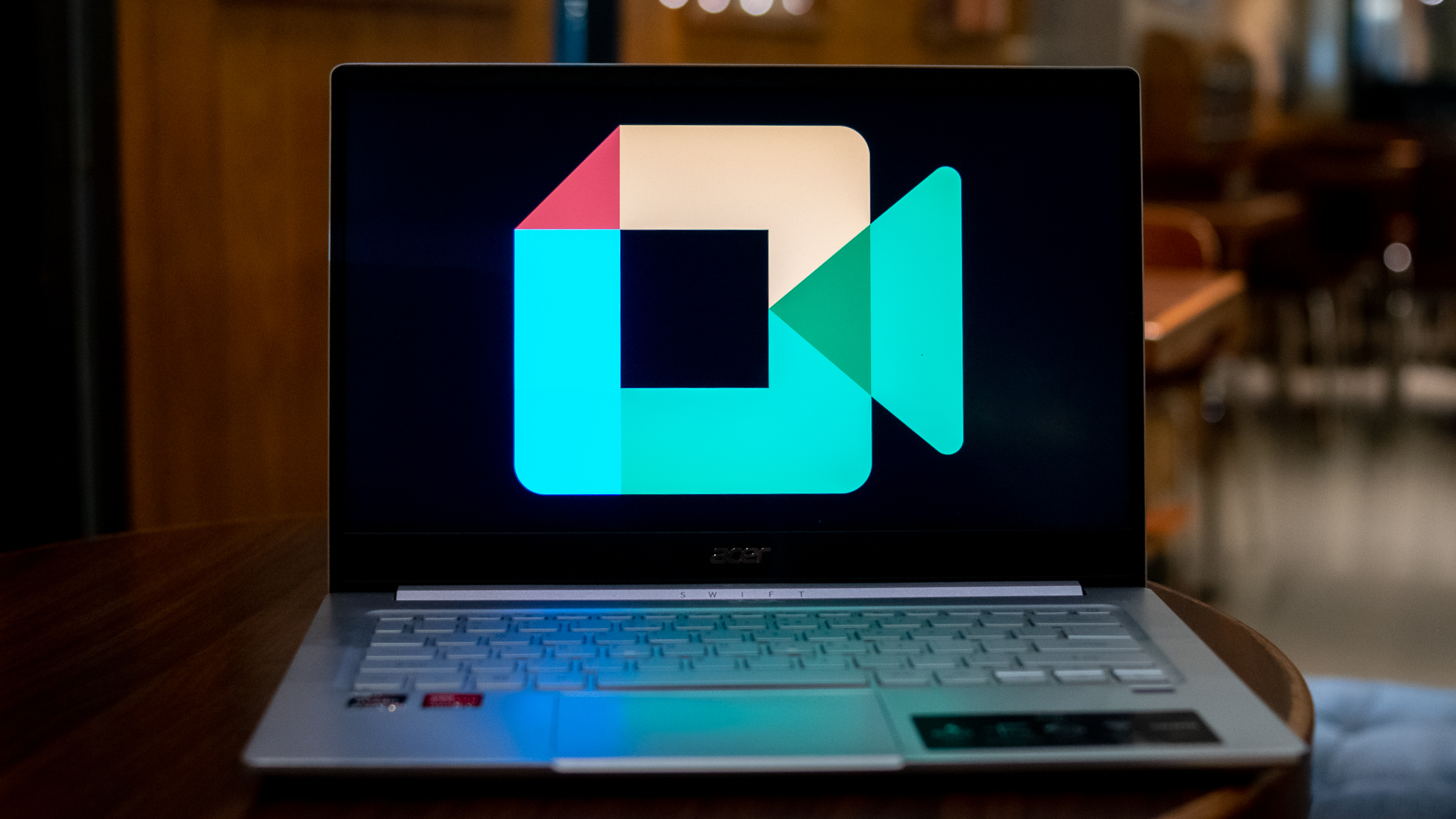Android Central Verdict
Xiaomi went all-out with the 13 Ultra, and the device feels more like a high-end camera that also has a few phone bits. The quad 50MP cameras at the back deliver the most versatile camera package of any phone available today, and all four lenses take magnificent photos and videos in any situation. Combine that with an exquisite design that grabs attention, the latest hardware, ultra-fast charging tech, clean software with minimal bloat, and all the extras you need in a flagship, and the Xiaomi 13 Ultra is a phone like no other.
Pros
- +
Magnificent 50MP primary and three 50MP auxiliary cameras
- +
Stunning design with large camera island and leather back
- +
Stellar battery life with 90W wired and 50W wireless charging
- +
Latest internal hardware with no overheating issues
- +
Sublime 120Hz QHD+ AMOLED screen with plenty of customizability
- +
Less bloatware than previous generations
- +
IP68 dust and water resistance
Cons
- -
Won't get as many software updates as Galaxy S23 Ultra
- -
Not launching in India or North America
Why you can trust Android Central
Xiaomi's imaging efforts got a big boost last year thanks to its partnership with Leica, but the first product to feature Leica's software tuning — the Xiaomi 12S Ultra — was limited to its home market. Xiaomi acknowledged at the time that it would launch its successor globally, and the Xiaomi 13 Pro served as an initial preview of the collaboration earlier this year.
But with the Xiaomi 13 Ultra, we're getting a much better look at where this partnership is headed, and what it actually brings to the table. Without buying the lede too much, the 13 Ultra is not only Xiaomi's best phone to date, but is also the most versatile camera phone you can buy in 2023. The combination of quad 50MP cameras along with significant tweaks to image processing — no doubt facilitated by Leica — make the 13 Ultra a real powerhouse.
I called the Galaxy S23 Ultra my favorite phone of 2023, but after using the Xiaomi 13 Ultra for over a month, I'm ready to amend that statement. What Xiaomi has managed to create is truly incredible, and while the 13 Ultra isn't available in as many markets as I'd like and will get one fewer software update than Samsung's phones, it is still a truly outstanding phone. If you're looking for a flagship with amazing cameras, you'll love what's on offer here.
About this review
I'm writing this review after using the Xiaomi 13 Ultra for more than a month in Hyderabad, India. Xiaomi sent over the Chinese version of the device for testing, and it didn't include the Play Store or other Google services out of the box. Two weeks into the testing window, the brand sent the global build that's available on retail devices sold in Germany, Italy, and other global markets (MIUI 14.0.4.0.TMAEUXM), and this is the version I used for testing the software and cameras.
Xiaomi 13 Ultra: Pricing and availability
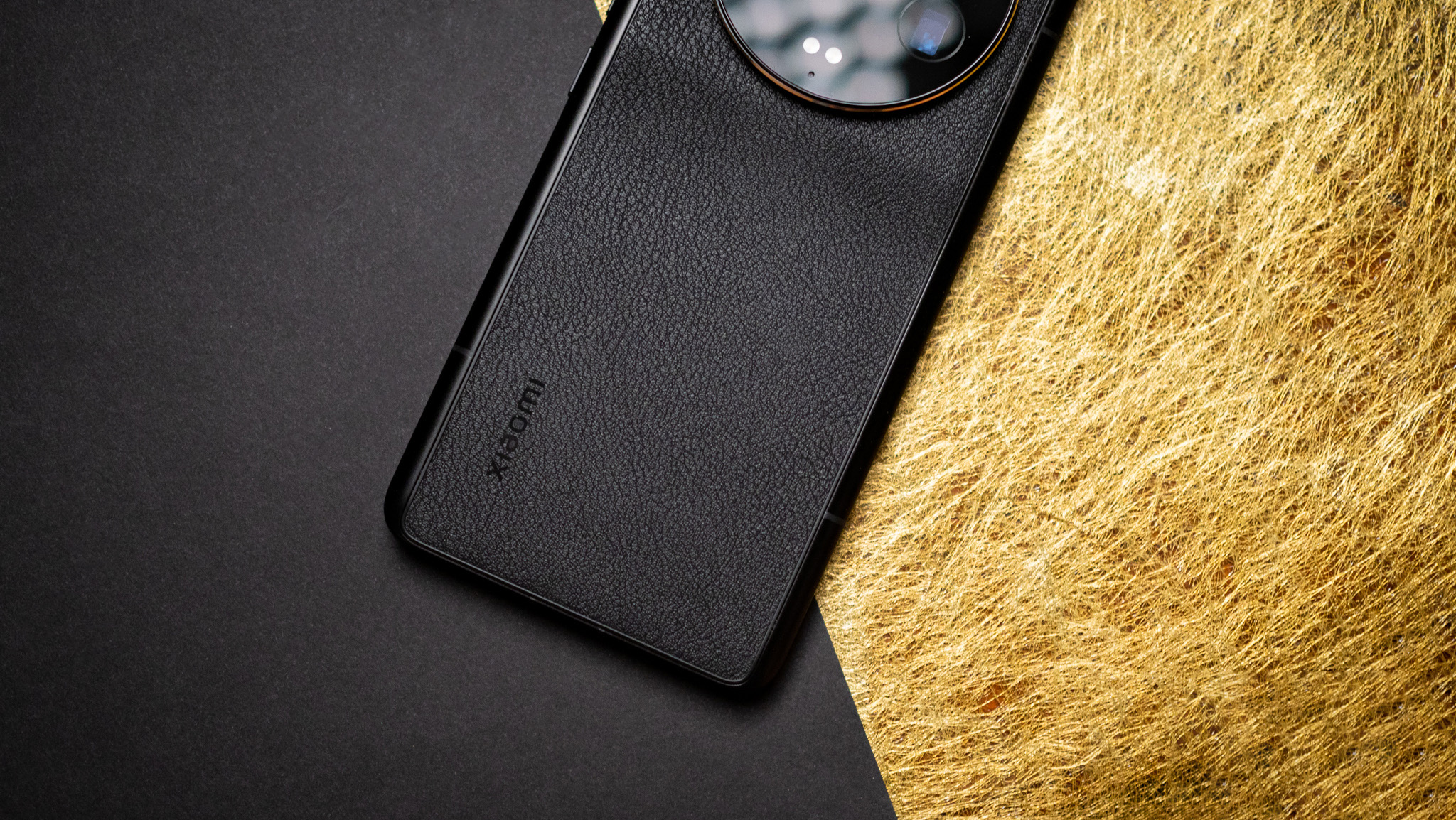
Xiaomi unveiled the 13 Ultra in China back in April, and the phone made its global debut on June 12. It is going on sale starting June 21 in select global markets, including Germany, Spain, France, Italy, the Netherlands, and more. Xiaomi is selling the 13 Ultra in a single version with 12GB of RAM and 512GB of storage, and it is going on sale for €1,499 ($1,615).
Xiaomi has confirmed that it doesn't plan to bring the 13 Ultra to India — its biggest overseas markets — and like the rest of the brand's phone portfolio, the device isn't heading to North America.
Xiaomi 13 Ultra: Design
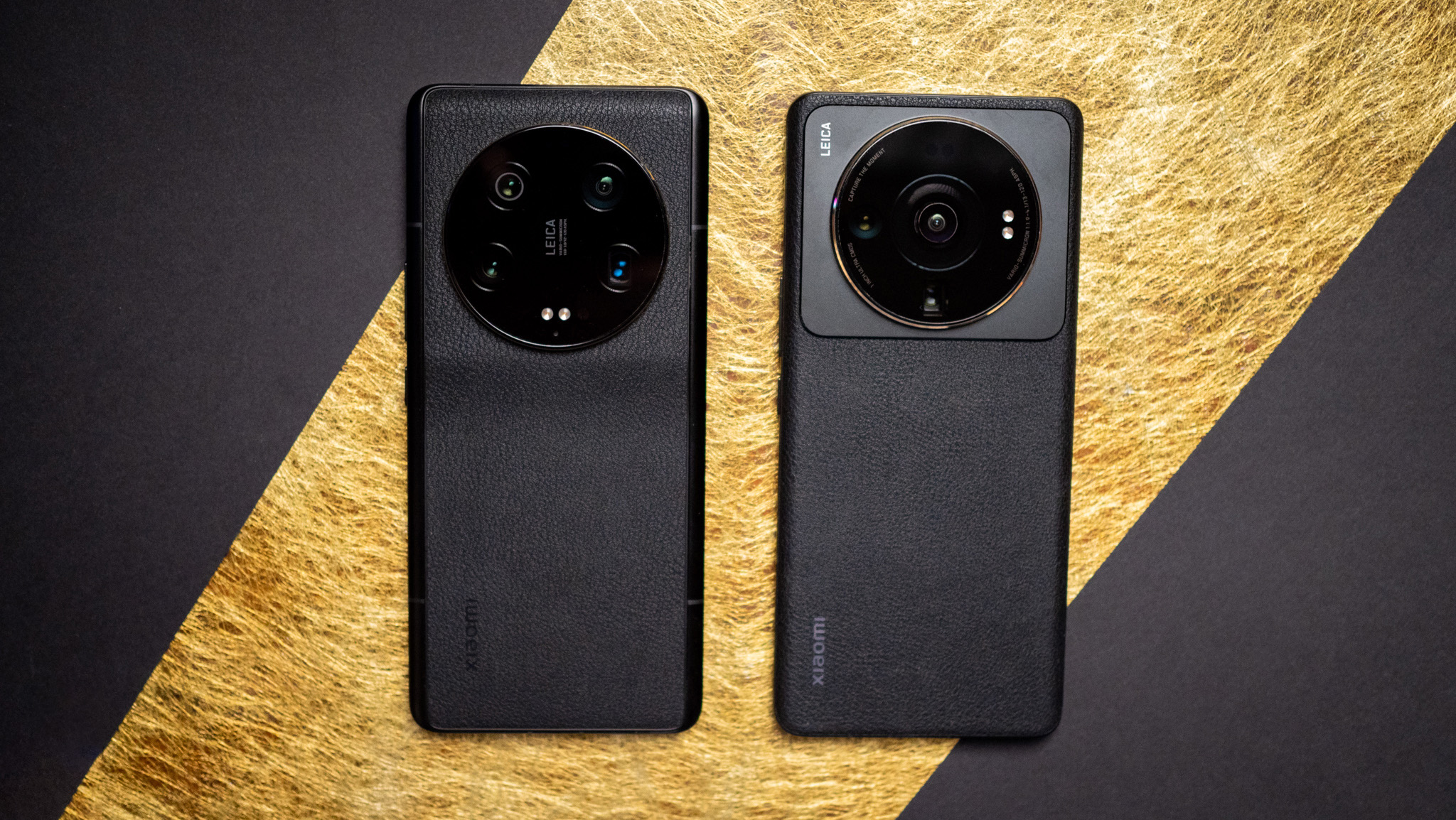
Xiaomi likes to switch the design of its phones with every generation, but the Xiaomi 13 Ultra shares a lot of similarities to its predecessor. It has a leather back and a circular camera island at the back with gold accents, and I'm glad Xiaomi retained this design — that oversized camera module immediately grabs attention, and the gold ring around the housing gives the phone a lot of visual flair.
Get the latest news from Android Central, your trusted companion in the world of Android
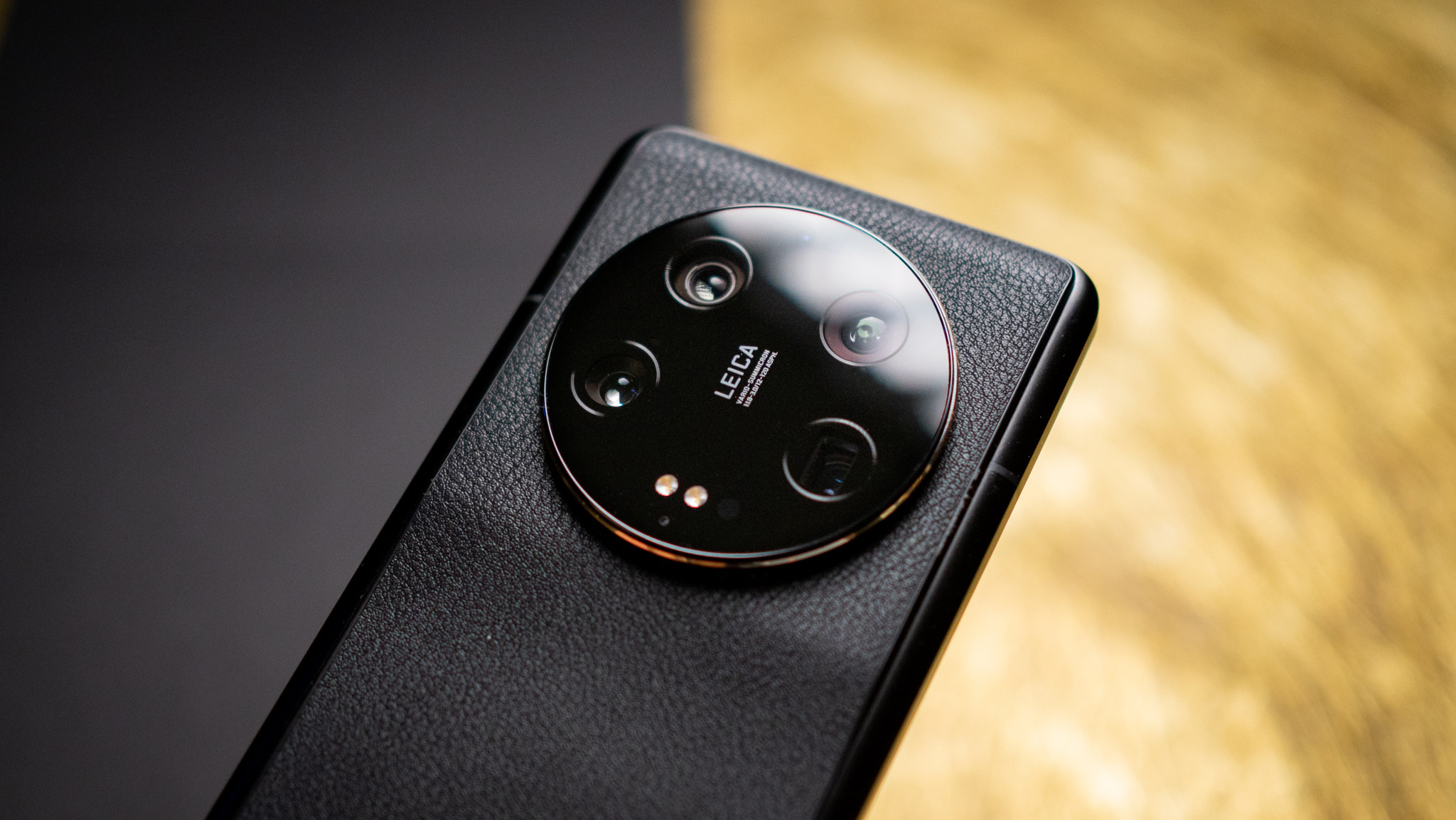
While it's using the same leather finish, things are a little different this time. The leather doesn't extend to the mid-frame as it did on the 12S Ultra; it instead ends a few millimeters away from the edge, and the curve that extends to the mid-frame has the same metallic finish as the rest of the chassis.
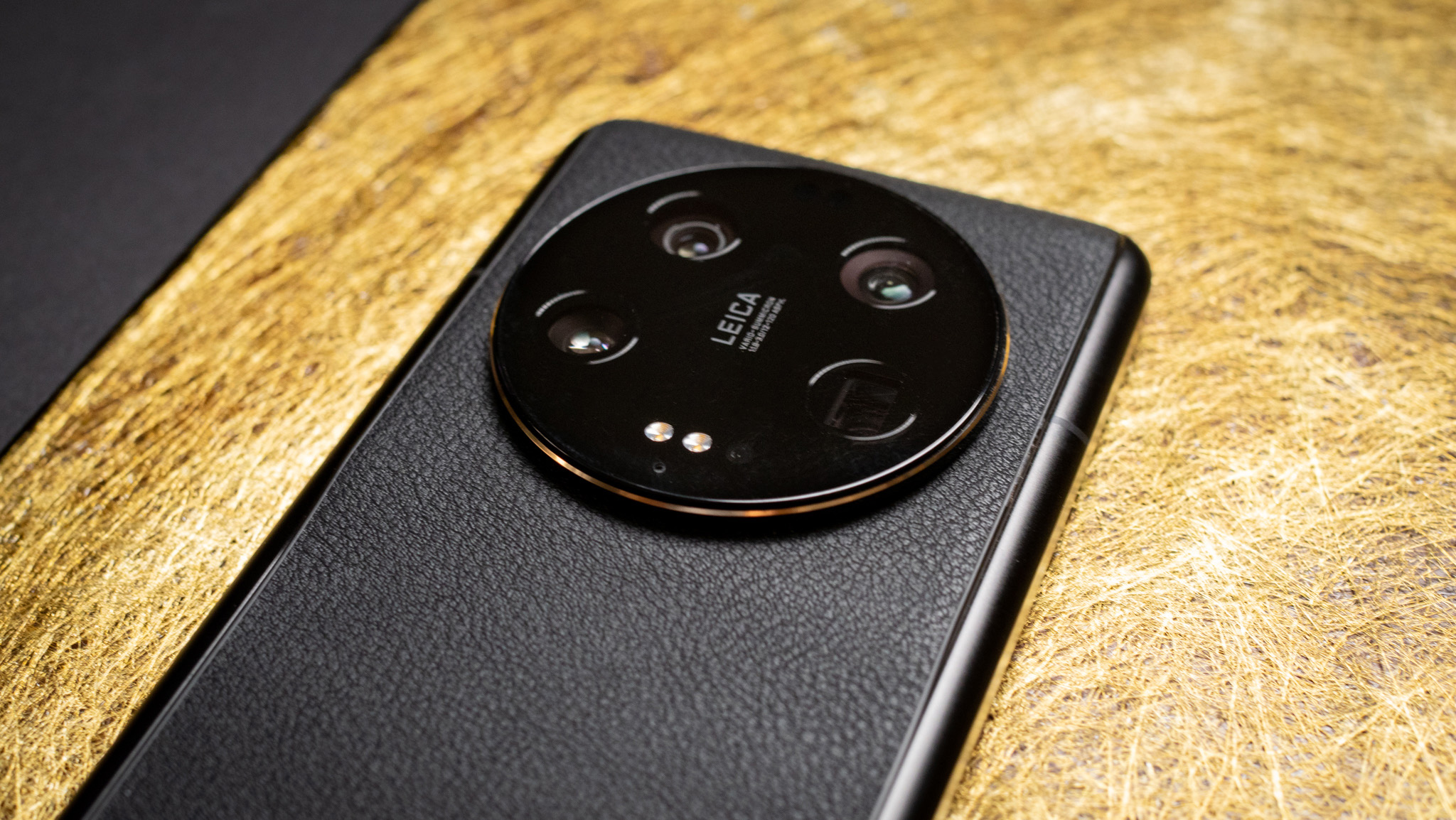
Because of the sheer size of the camera housing, it protrudes a considerable amount from the chassis — more than any other phone I've used to date — and to its credit, Xiaomi tried to offset this by raising the sides around the camera housing. The camera island creates a two-degree incline when the phone is laying flat on a surface, and its oversized design works to its advantage here — you don't get any wobble.

I was worried about weight distribution, but Xiaomi did a great job ensuring the phone doesn't feel top-heavy. The phone is just 7g lighter than the Galaxy S23 Ultra, but it is 3.5mm narrower, and that makes a huge difference in daily use. The 13 Ultra is available in three colors — green, white, and black — and if you're eyeing this phone, I'd suggest going with the green option. I got the black variant for testing, and while I like the design, it doesn't stand out quite as much as the green color.
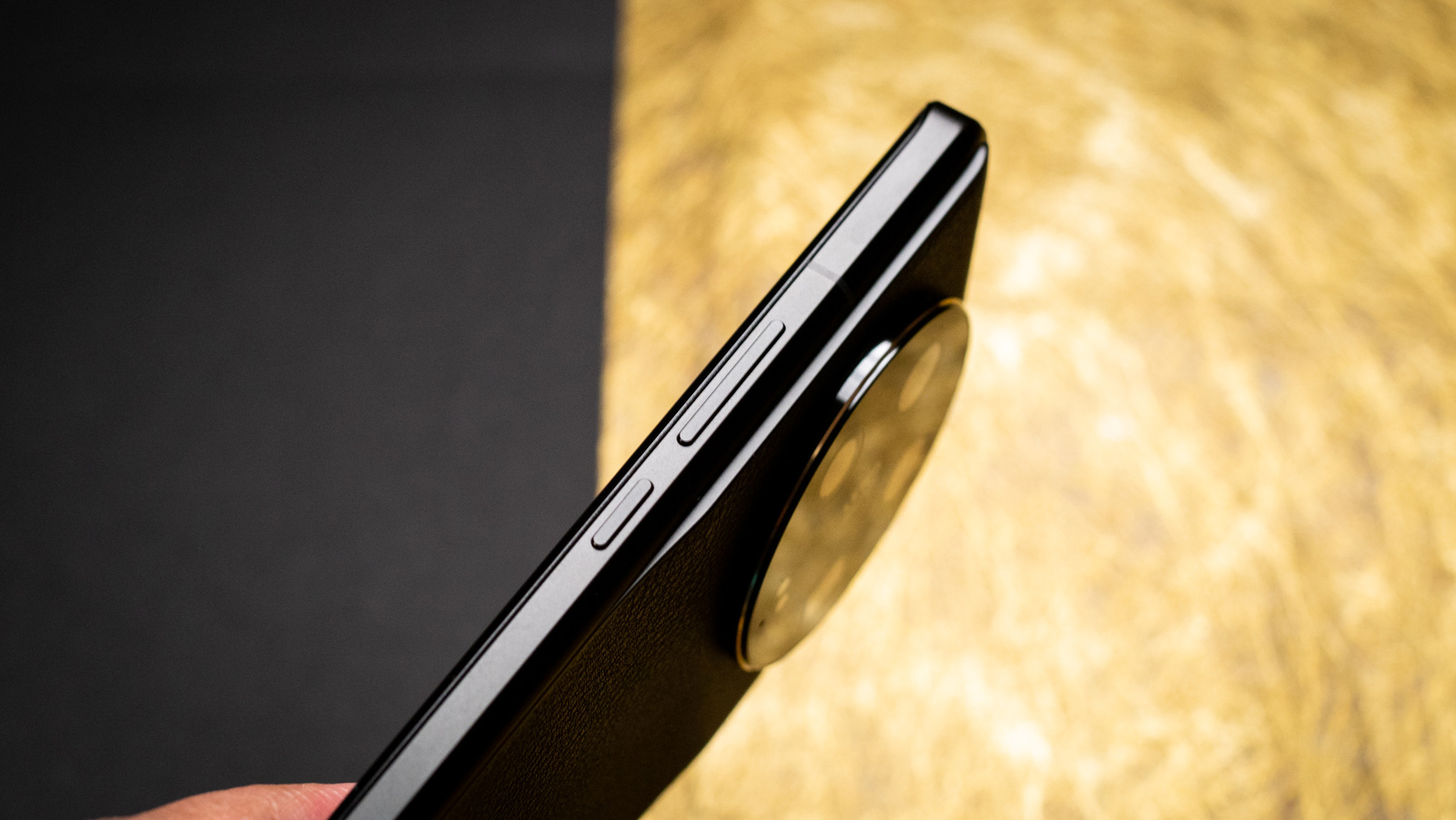
Another usability-focused change is the mid-frame; like Samsung, Xiaomi reduced the curvature on the sides, so you get a little more room to hold the device. The mid-frame has a matte texture that feels great, and the device looks every bit as premium as its price tag suggests.
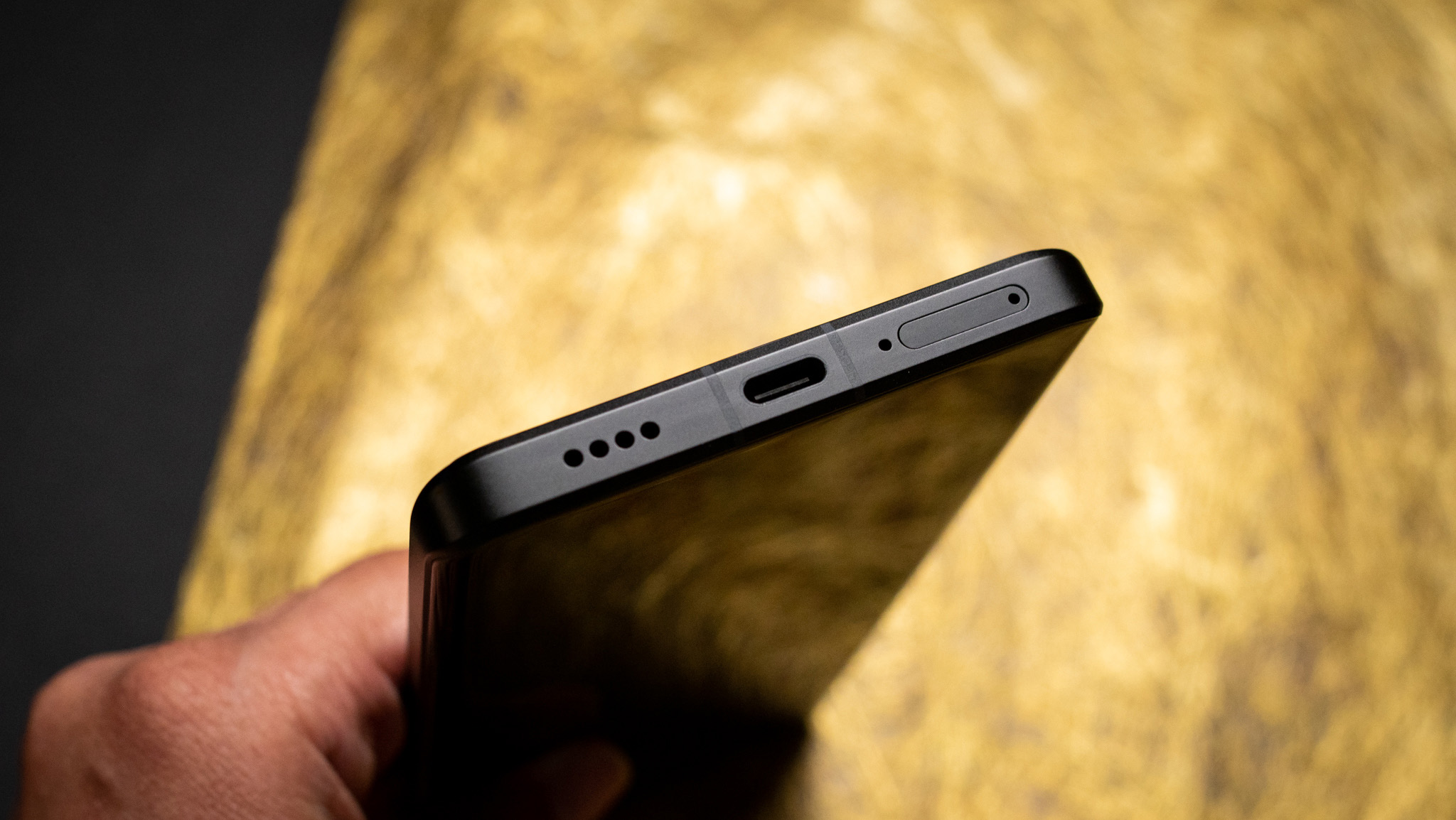
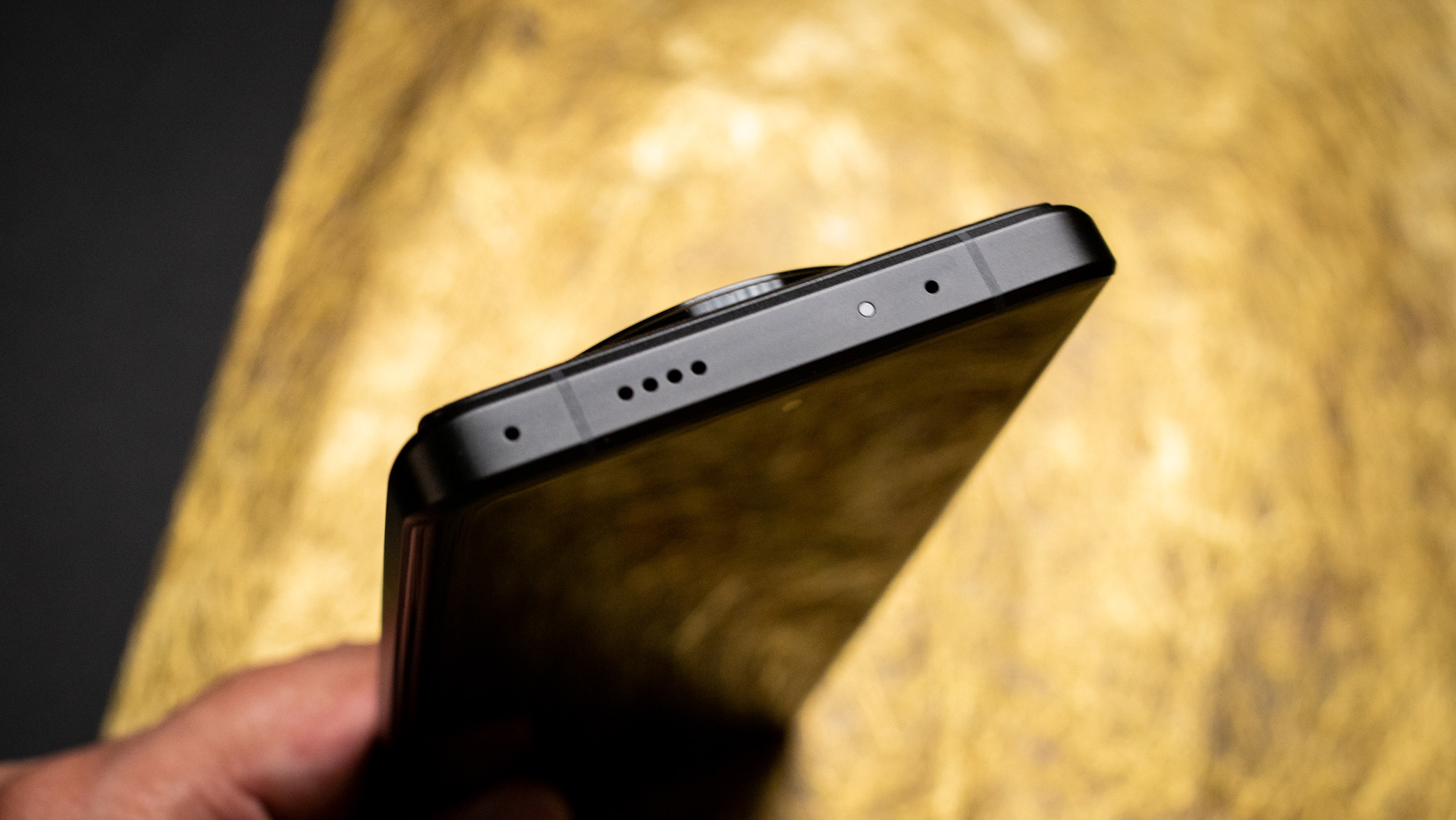
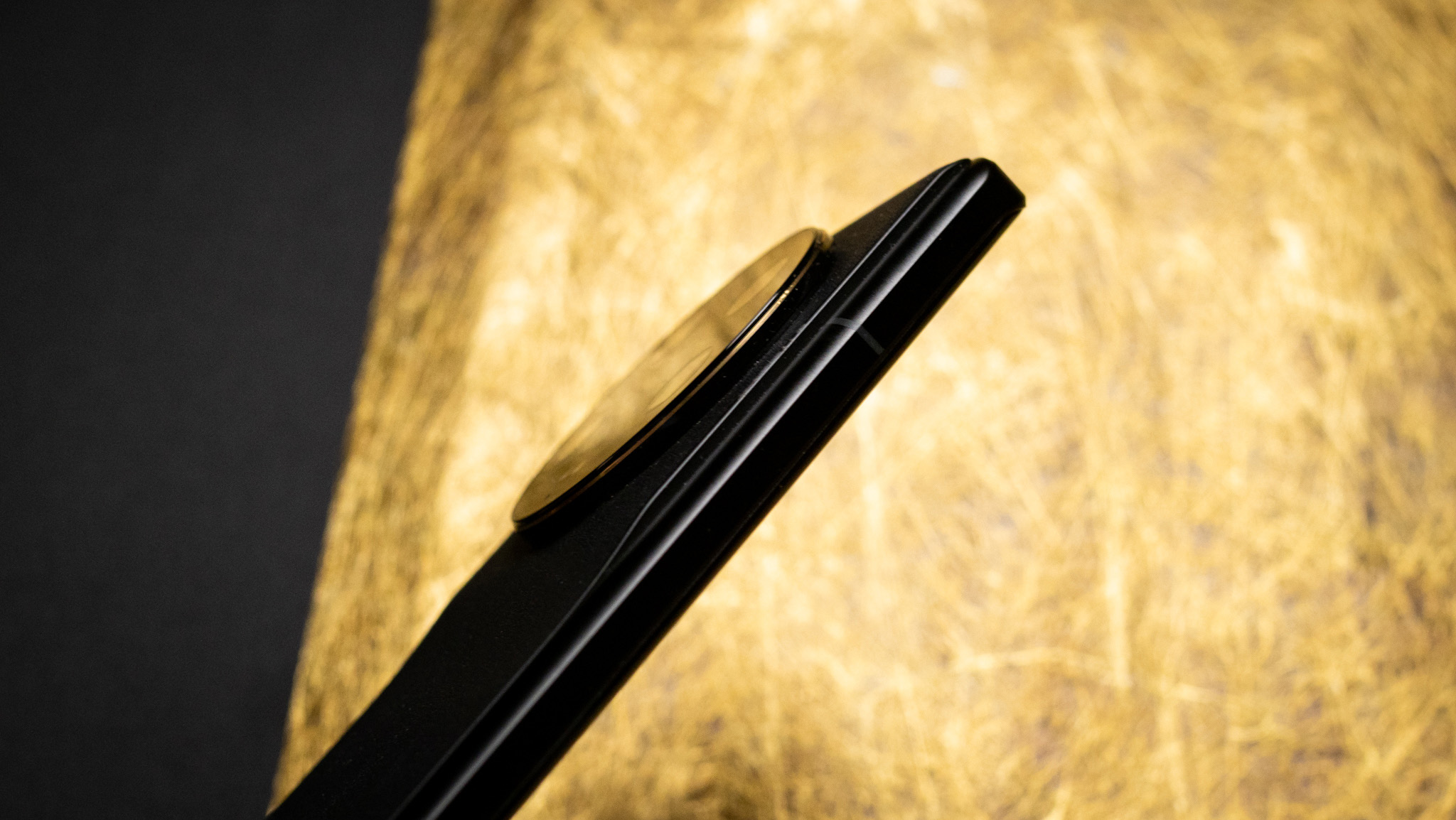
You'll find the power and volume buttons on the right, and they have great tactile feedback. There's the usual IR blaster located at the top, and you get the dual-SIM card slot at the bottom. Xiaomi hasn't omitted any extras either, and the 13 Ultra comes with IP68 dust and water resistance.
Overall, the Xiaomi 13 Ultra is one of the best-looking phones in the market. The in-hand feel of the device is much better than official renders would suggest, and the large camera combined with the leather back and gold accents give the device a presence you won't find anywhere else.
Xiaomi 13 Ultra: Screen

Xiaomi has a long history of offering well-calibrated AMOLED screens on its high-end phones, and it's no different this time around. The Xiaomi 13 Ultra features a 6.73-inch AMOLED panel with 120Hz refresh and a QHD+ resolution of 3200 x 1440. There's 1,920Hz PWM dimming, so it should be well-suited to those with PWM sensitivity, and it has HDR10+ as well as Dolby Vision.
After using the device in a particularly hot summer, I had zero issues with brightness levels in outdoor use. The screen goes up to 1,300 nits in auto mode, and it exceeds that figure when viewing HDR content. Like the best Xiaomi phones, you get LTPO tech here, and it dynamically changes the screen's refresh from 1Hz to 120Hz according to on-screen content.
Xiaomi obstinately refuses to enable the 120Hz mode out of the box, so you'll need to go into the settings and manually change it. It's a similar story with resolution; the default is 1080p, and you'll need to manually change it to QHD+ to take full advantage of the panel's potential. The screen itself is one of the best around, offering exquisite colors and contrast levels.
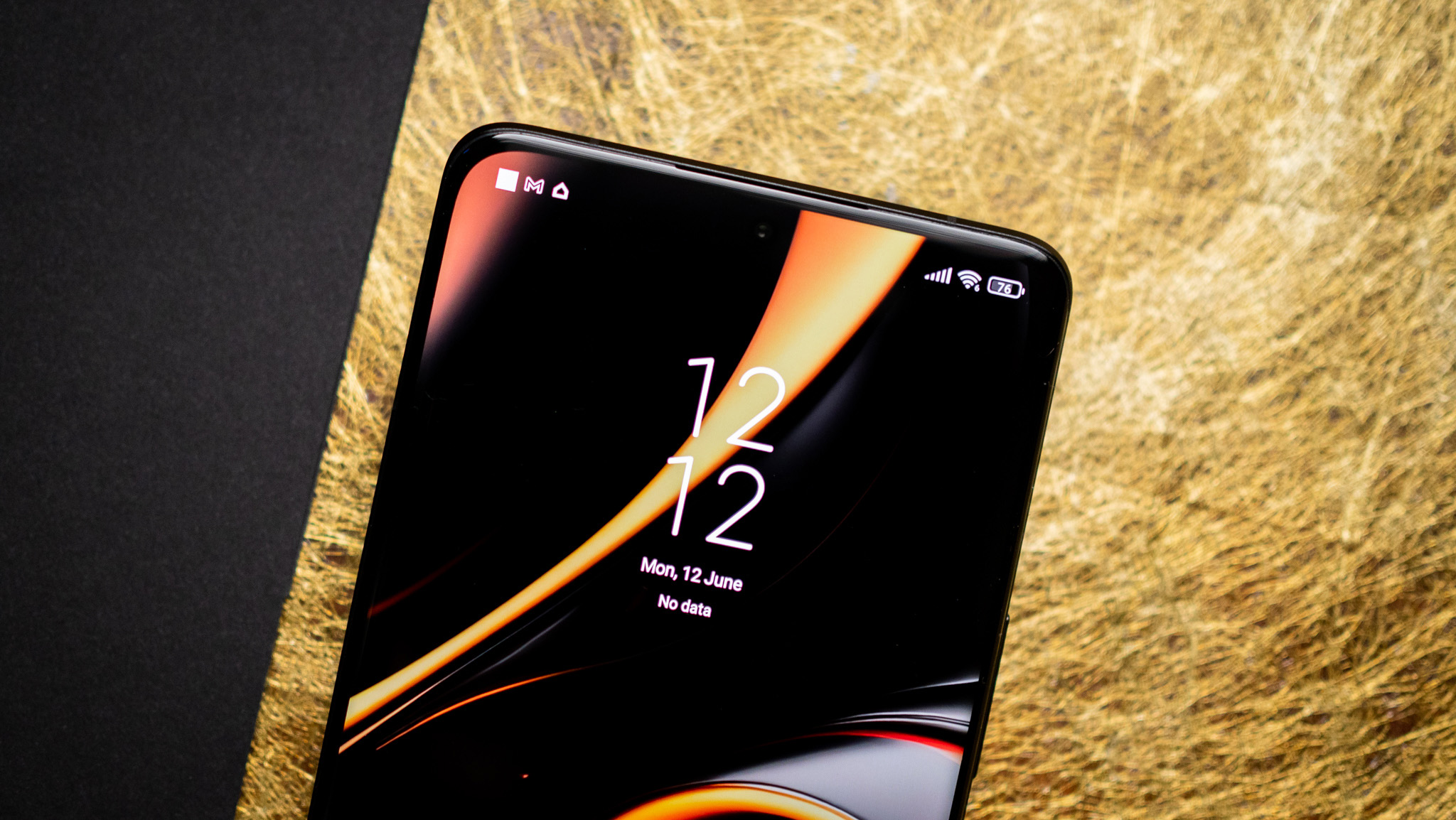

As always, there's a lot of customizability when it comes to the screen, and you get three color modes on the 13 Ultra: Original colour Pro, Vivid, and Saturated. Vivid adjusts the color balance based on the content on the screen, and I found the Original colour Pro mode to be ideal in my use case. You also get the ability to tweak the color balance individually, switch to warmer or cooler hues, and dynamically adjust colors based on ambient light.
MIUI has a decent always-on mode, and it is unchanged. You get a good amount of customization options here as well, along with analog and digital clocks, and the ability to set up your own pattern.
Xiaomi has led the field when it comes to stereo sound on its phones over the last three years, and the 13 Ultra has a balanced configuration that delivers stellar onboard sound. It gets loud and detailed, and it automatically switches channels based on orientation of the phone. The identical channels at the top and bottom produce a lively sound that's great for streaming content or playing games, and I had zero issues in this area.
Xiaomi 13 Ultra: Hardware and battery
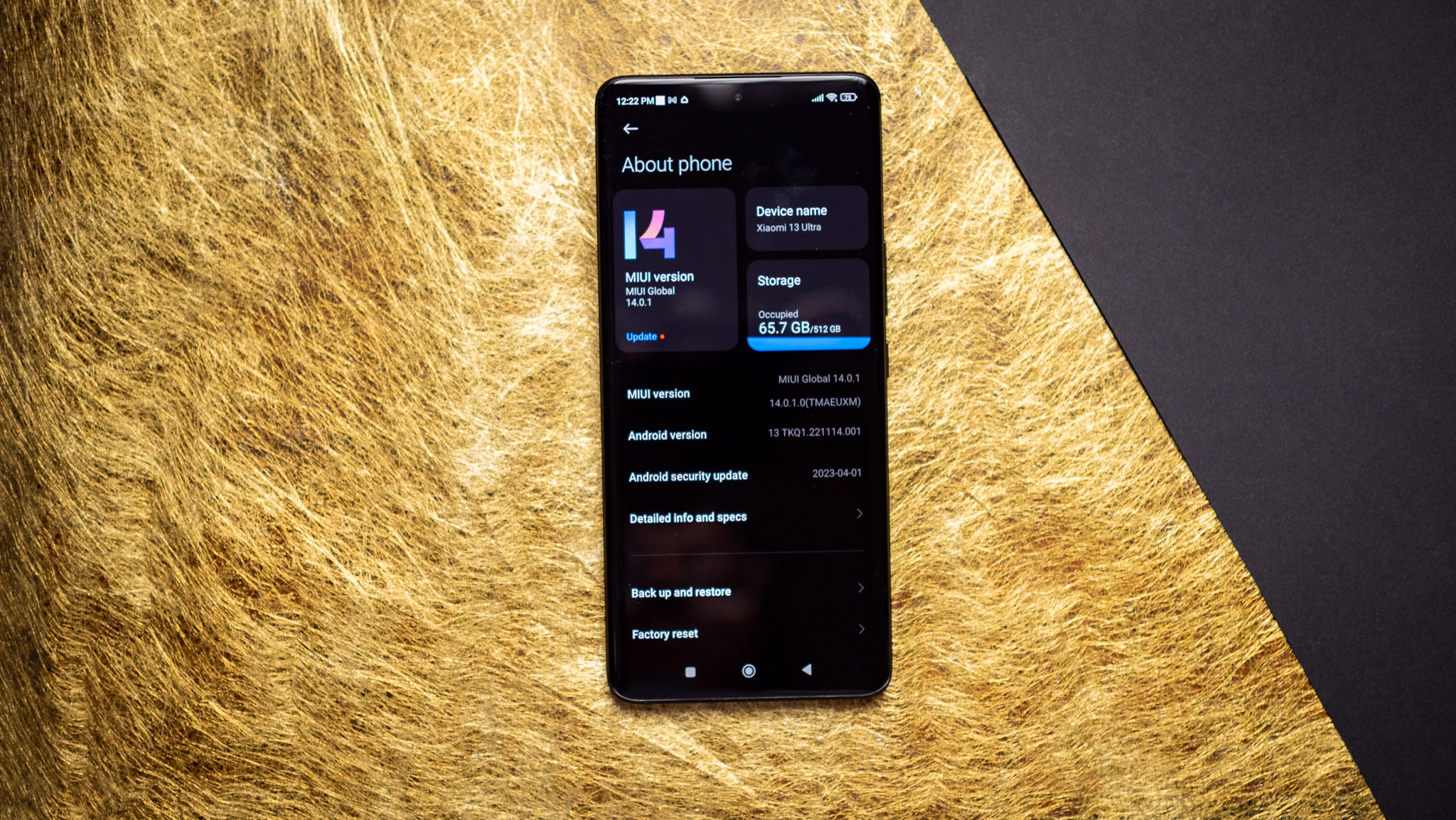
The Xiaomi 13 Ultra is powered by Qualcomm's latest Snapdragon 8 Gen 2. It is a known quantity at this point, and I used over a dozen devices powered by the chipset. Like other phones that feature the silicon, the Xiaomi 13 Ultra handles everything Android can throw at it with effortless elegance — whether that's multitasking, visually-intensive gaming, or extended gaming sessions.
| Category | Xiaomi 13 Ultra |
|---|---|
| OS | MIUI 14 based on Android 13 |
| Display | 6.73-inch 120Hz QHD+ (3200x1440) LTPO AMOLED, Gorilla Glass Victus |
| Chipset | Qualcomm Snapdragon 8 Gen 2, 1 x 3.2GHz Cortex X3, 2 x 2.8GHz Cortex A715, 2 x 2.8GHz Cortex A710, 3 x 2.0GHz Cortex A510, Adreno 740, 4nm |
| RAM | 12GB LPDDR5X |
| Storage | 512GB UFS 4.0 |
| Rear camera 1 | 50MP 1-inch f/1.9 and f/4.0 Sony IMX989, 1.6um pixels, OIS, 8K at 24fps, 4K at 60fps, Dolby Vision |
| Rear camera 2 | 50MP f/1.8 Sony IMX858, wide-angle lens, 122-degree FoV |
| Rear camera 3 | 50MP f/1.8 Sony IMX858, telephoto with OIS, 3.2x optical zoom |
| Rear camera 4 | 50MP f/3.0 Sony IMX858, telephoto with OIS, 5x optical zoom |
| Front camera | 32MP fixed focus, 1080p video |
| Ingress protection | IP68 dust and water resistance |
| Security | In-screen optical fingerprint module, face unlock |
| Audio | Stereo sound, USB-C, AptX suite, 24-bit/192kHz audio |
| Connectivity | Global Sub-6 5G, Wi-Fi 7, Bluetooth 5.3, NFC |
| Battery | 5000mAh, 90W wired charging, 50W wireless charging, 10W reverse wireless charging |
| Dimensions | 163.2 x 74.6 x 9.1mm, 227g |
| Colors | Olive Green, Black, White |
There isn't noticeable overheating either, and the phone didn't lag or stutter in the month I used it. While Xiaomi offers several memory and storage configurations of the 13 Ultra in its home market — I'm using the 16GB/512GB variant — the global model is sold in a single 12GB/512GB version, and that's more than adequate. As is the case with other high-end phones, you get LPDDR5X RAM and UFS 4.0 storage modules here.
Rounding out the hardware, there's global Sub-6 5G bands, Wi-Fi 6e with Wi-Fi 7 coming via a future OTA update, Bluetooth 5.3, the full suite of AptX codecs, GPS radios for various systems, and NFC. There really isn't anything missing on the hardware side of things, and the 13 Ultra is just as fast and fluid as the 13 Pro, Galaxy S23 Ultra, and other 2023 flagships.
One area where Xiaomi continues to do well is haptics; you get an x-axis vibration motor on the 13 Ultra that delivers excellent feedback while using the keyboard and navigation gestures, and it makes a big difference in daily use. On that note, the in-screen optical fingerprint sensor is ideally located on the front, and it is fast to authenticate.
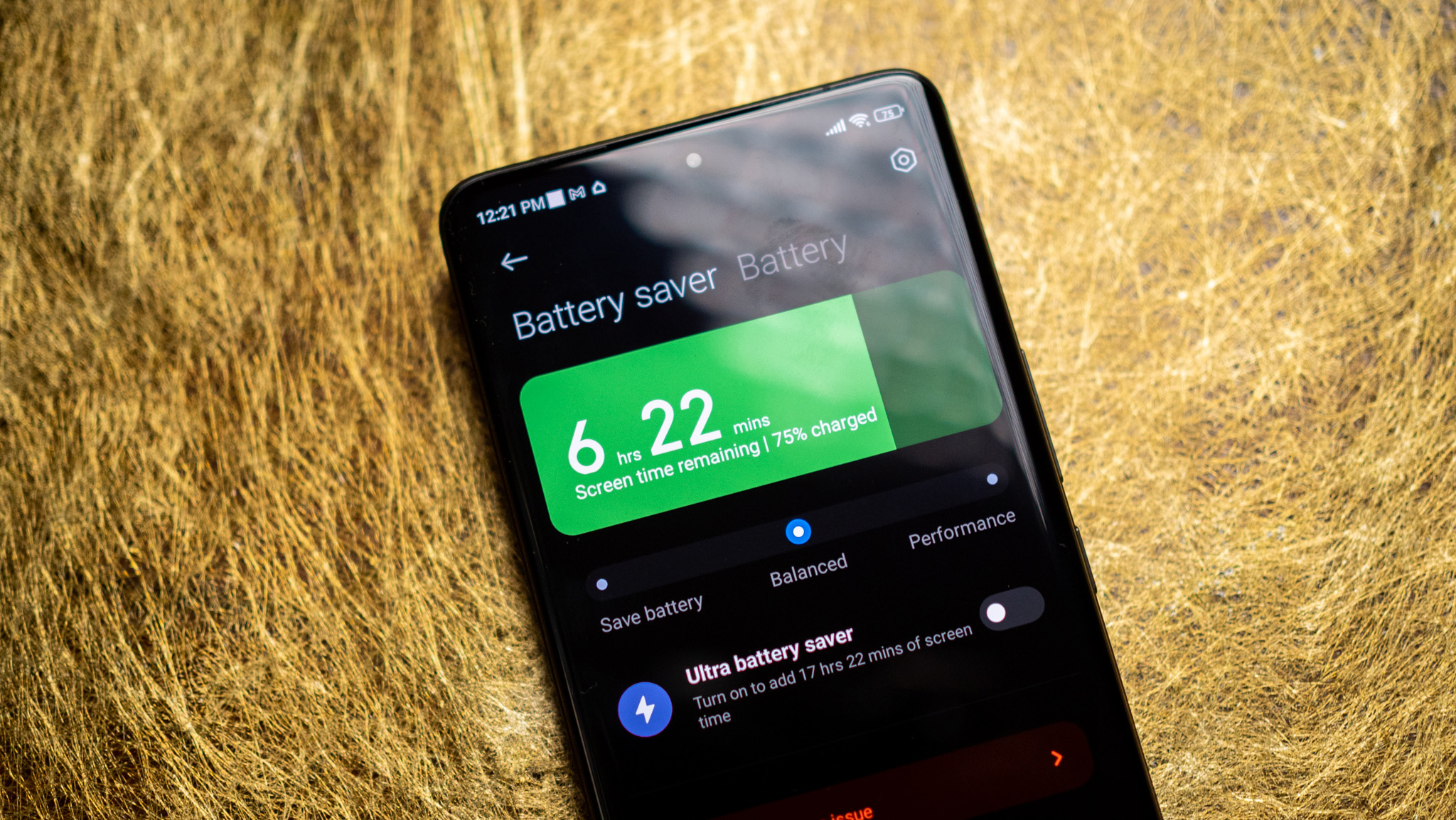
Battery anxiety hasn't been an issue on any phone I used in 2023, and that's true for the Xiaomi 13 Ultra as well. The phone has a 5000mAh battery that's divided into two cells, and has 90W wired charging along with 50W wireless charging and 10W reverse wireless charging. I got well over six hours of screen-on-time over the course of the day consistently, and I never had to worry about enabling the Power Saver mode even on days with heavy usage.
It took 42 minutes to fully charge the device, and I got to the 50% mark within 15 minutes and 85% in under 30 minutes. Although those figures aren't as fast as the 120W charging tech on the Xiaomi 13 Pro, it is in line with most phones in the market today, and a far sight better than the Galaxy S23 Ultra or any other Samsung phone.
Like previous generations, Xiaomi uses the standard USB 3.0 PD charging tech, and you get a 90W charger bundled in the package. The charger hits 90W over the PD standard, making it that much more versatile for use with other products.
Xiaomi 13 Ultra: Cameras

Obviously, the camera is the biggest area of focus with the Xiaomi 13 Ultra, and the phone is packing serious hardware on this front. It is rocking four 50MP cameras at the back, with the primary 50MP module featuring the Sony IMX989 sensor. This is the same 1-inch sensor that was used in the Xiaomi 12S Ultra, Xiaomi 13 Pro, and Vivo's X90 Pro, and it is phenomenal.
In a unique addition, Xiaomi went with variable f/1.9 and f/4.0 for the primary lens, giving you the ability to alter the depth of field to a noticeable degree. This sensor has large 1.6um pixels, OIS, and allows you to shoot 8K video at 24fps as well as 10-bit Dolby Vision footage.
Xiaomi is using the same Sony IMX858 module on the other three 50MP cameras, with the wide-angle lens offering a 122-degree field of view. You get dual 50MP telephoto lenses, and both have OIS — the primary f/1.8 telephoto goes up to 3.2x optical zoom, and the secondary f/3.0 lens hits 5x optical zoom. The viewfinder lets you go up to a 120x zoom factor by leveraging digital zoom, and while you still get usable shots at this level, they obviously lack a lot of detail.
Xiaomi is switching things up on the camera interface. You'll find the usual set of shooting modes laid out in a grid at the bottom, and there are toggles for the various lenses, Google Lens, flash, HDR, and beauty effects. The Leica collaboration sees red accents in the interface, along with two shooting modes — Leica Authentic and Leica Vibrant. You'll need to select one of these modes, and there's the ability to switch between the two via a dedicated toggle.
The change in the UI has to do with the additional settings; they're now easily accessible via a pull-down gesture, and you'll find the flash, gridlines, AI-assisted features, macro mode, motion tracking, tilt-shift, timer, and other modes here. You can also go to the full settings page via this overlay menu, and this is a more elegant solution to what Xiaomi has offered in the past.
You get a decent number of shooting modes as well as the ability to shoot full-res 50MP images, and Xiaomi's Pro mode is among the best in the industry. There's a Director mode that unlocks interesting use cases and lets you connect external tablets to use as a viewfinder — similar to Filmic's feature.


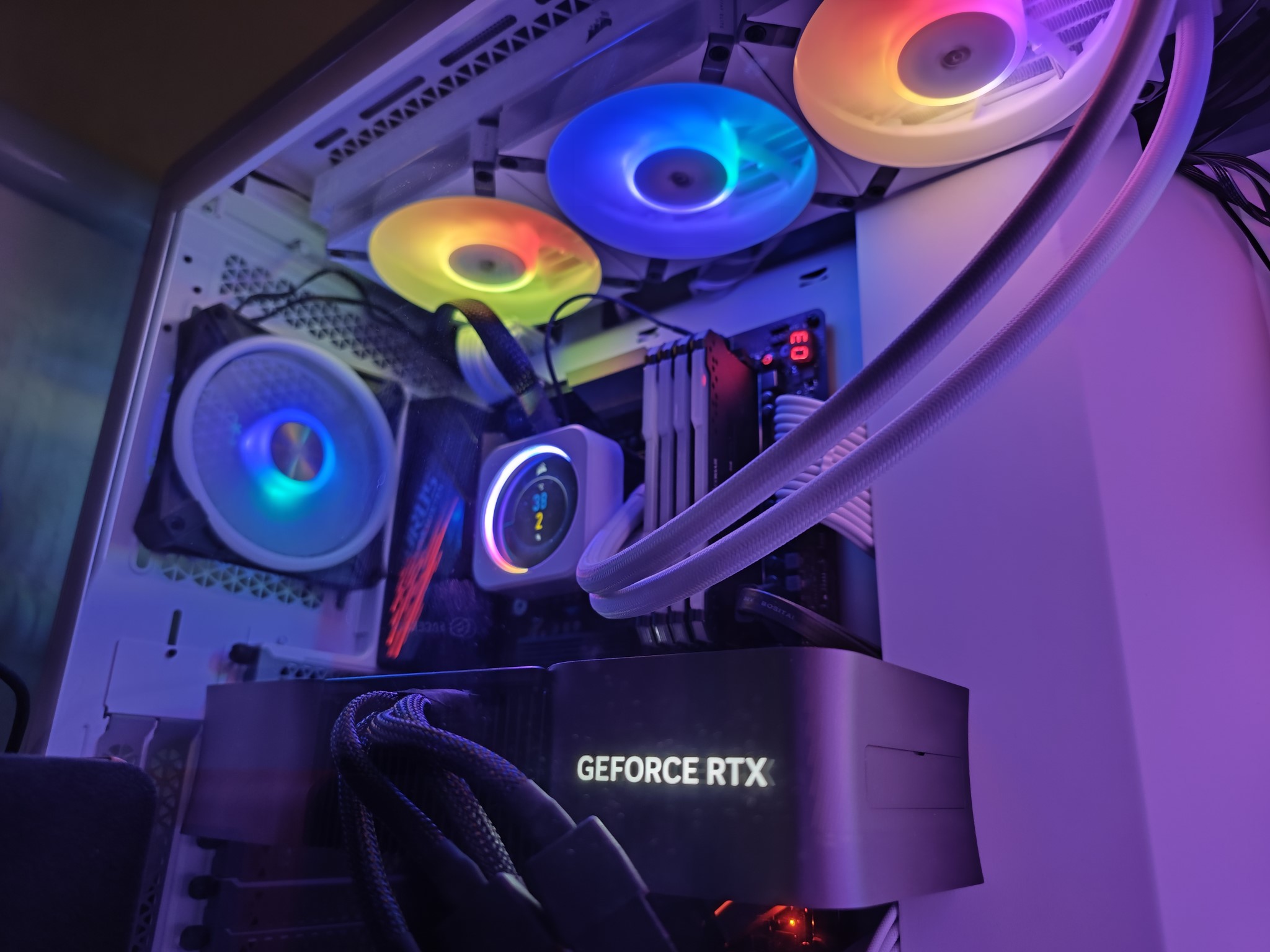
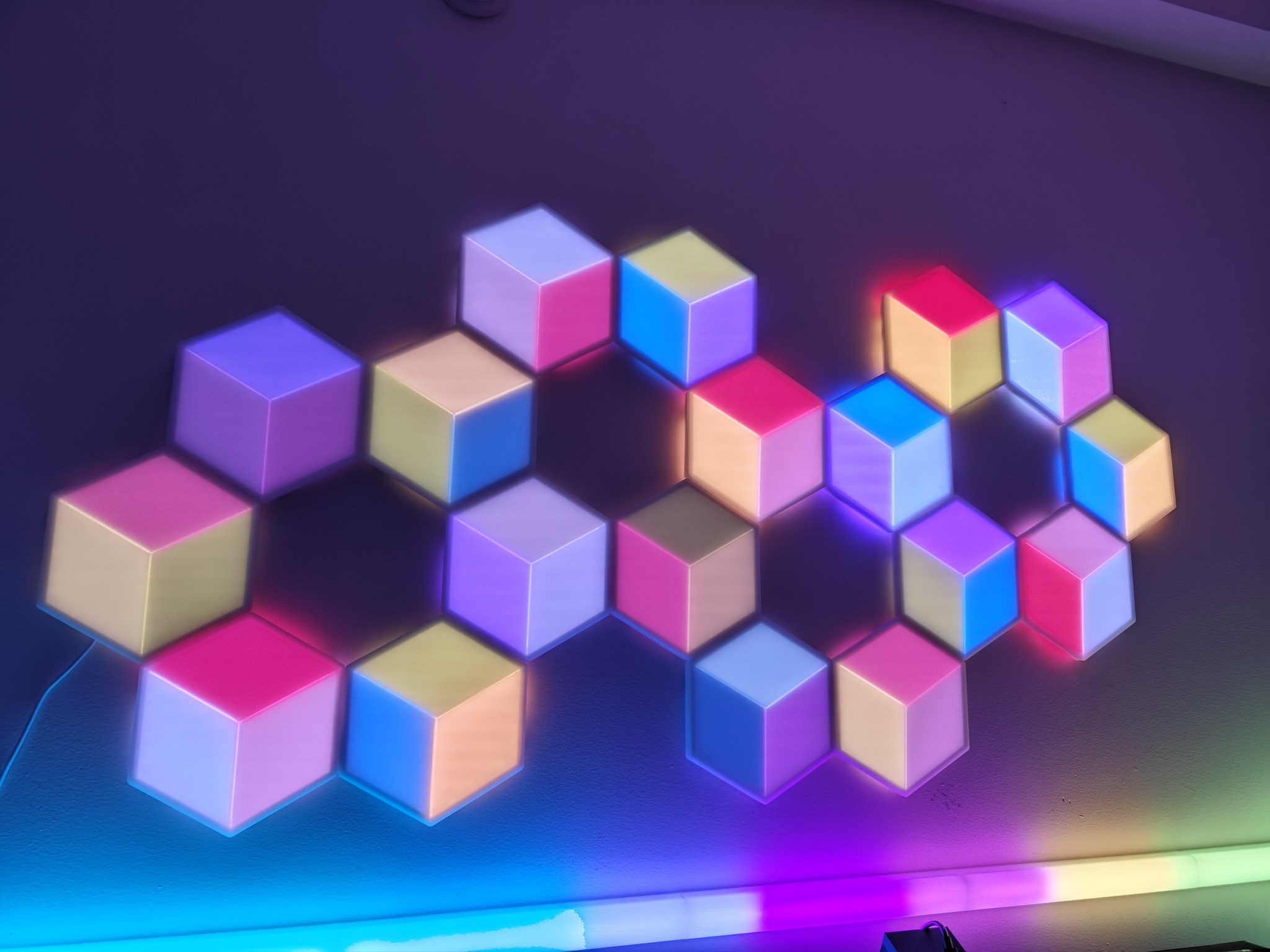

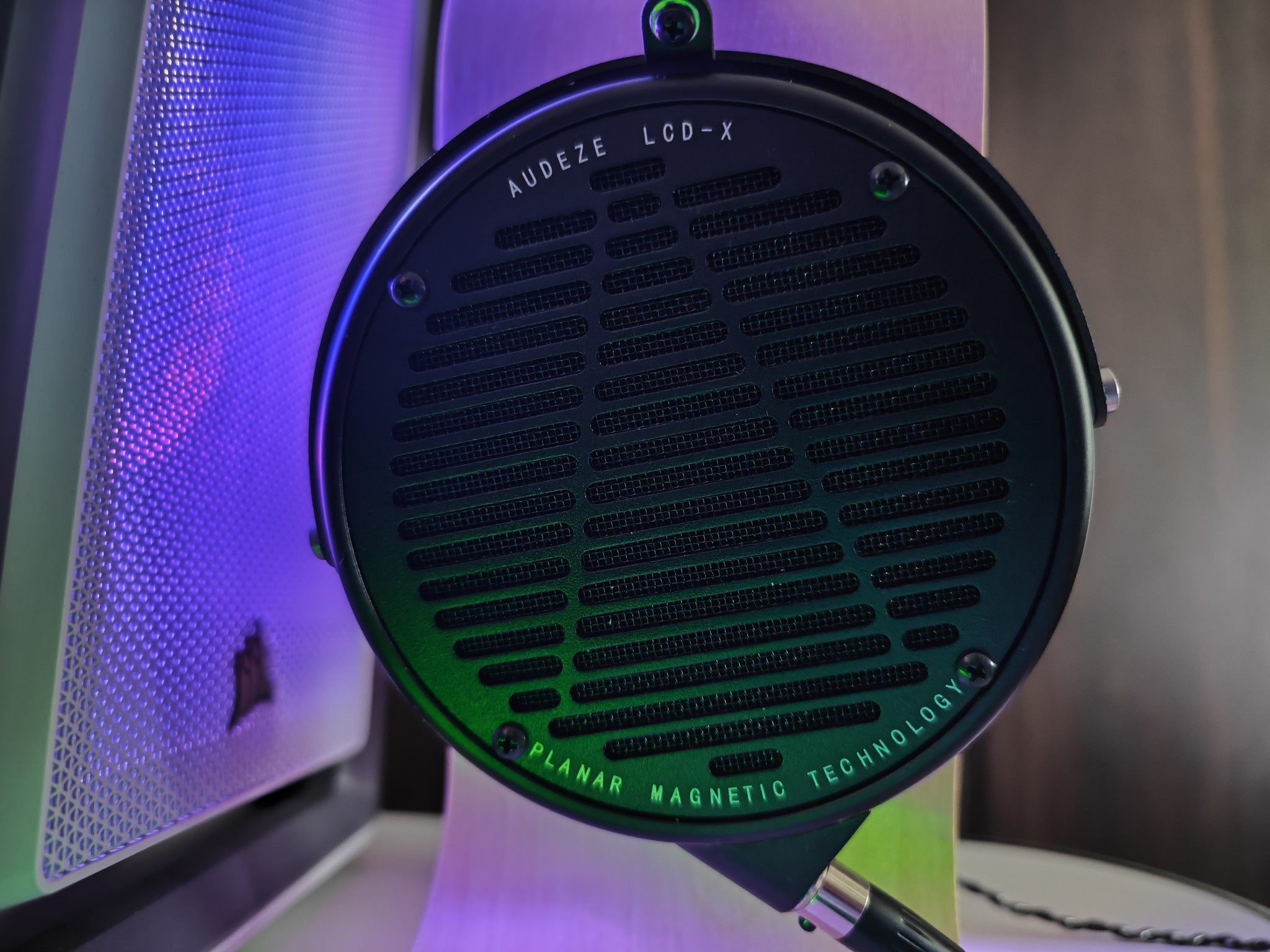
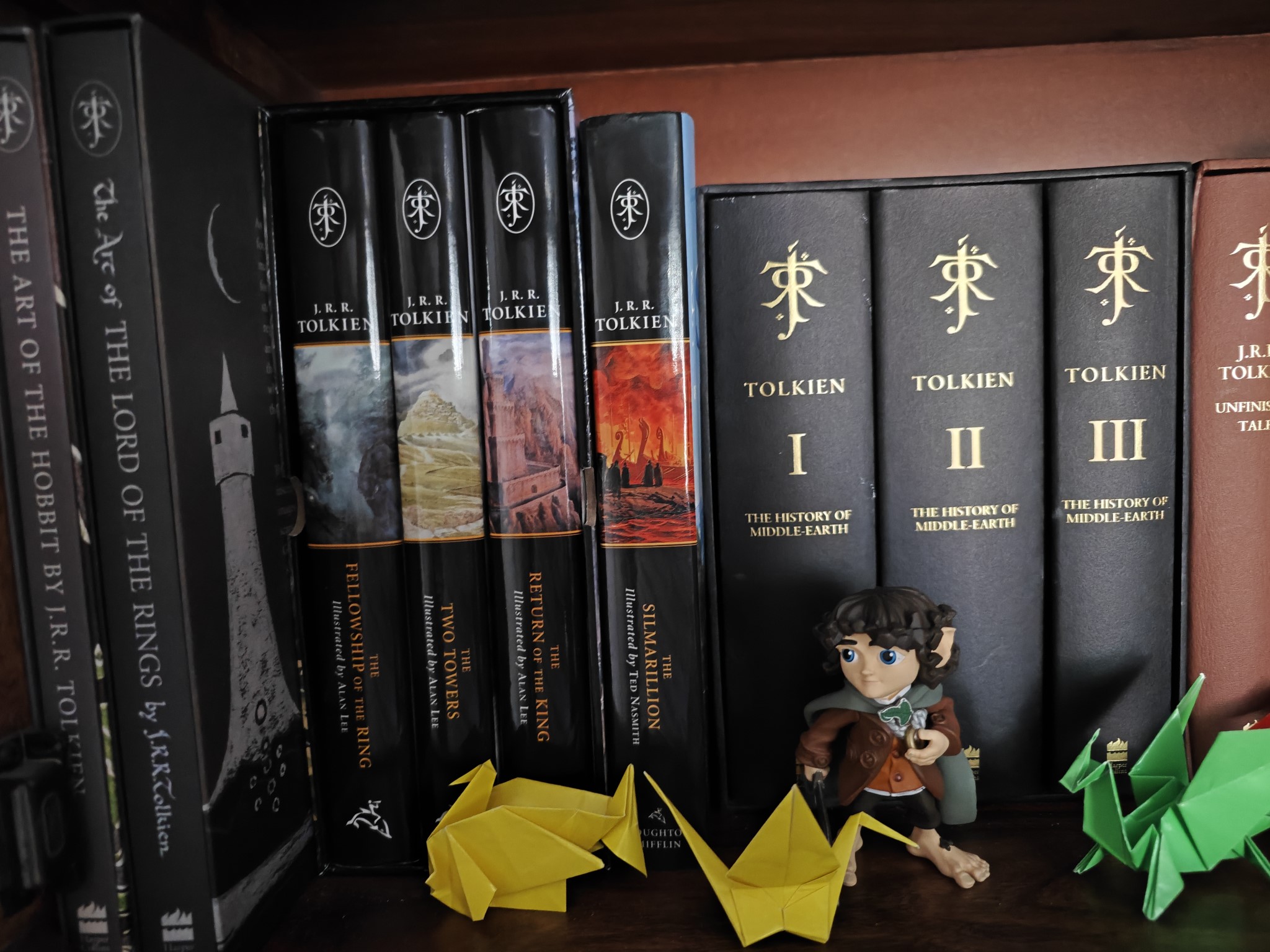






I used the Leica Vibrant mode for all the shots as it delivers richly saturated colors with good contrast levels. Xiaomi did a good job balancing the vibrancy of the colors and not going overboard, and while I also like the Authentic mode, the fact that it adds a vignette to all shots makes it usable only in select situations. Regardless of whatever mode you choose, you'll get excellent dynamic range and detail rendition, with the 13 Ultra doing a brilliant job with foliage, inanimate objects, and dialing in on moving objects.
It's the auxiliary cameras that deserve a lot of praise here. The wide-angle lens delivers photos of the same caliber as the primary 50MP module, and the 122-degree FoV means you get impressive shots in any situation. Similarly, the dual 50MP telephoto lenses are outstanding, and they do a good job minimizing noise levels and preserving detail. What's particularly great is how well the auxiliary cameras hold up in low-light conditions; the wide-angle holds its own against its rivals in this segment, and the telephoto lenses produce shots with good colors and detail.
Having used the IMX989 on a few phones, I knew what sort of shots I'd get out of the 13 Ultra at night, and the phone managed to deliver in this area. It is one of the strongest cameras in low-light scenarios, offering excellent detail and accurate colors and minimal noise levels — even in scenes with little to no light. Night mode kicks in automatically when the ambient light goes under a threshold, and it does a stellar job managing highlights and shadows, eking out plenty of detail.
Xiaomi added a lot of tweaks on the video side of things as well, and all four lenses can shoot 4K video at 60fps. The Steady video mode does a great job stabilizing footage, but it's limited to 1080p at 30fps. Rounding things off in this section, the 32MP selfie camera is unchanged from previous generations, and is decent enough. It is limited to 1080p video and lacks autofocus, but it manages to take good photos in most situations.
To sum it up, the Xiaomi 13 Ultra offers the best overall camera package of any phone in 2023. The combination of the quad 50MP lenses and the quality of the resultant images in challenging situations allow it to stand out from the Galaxy S23 Ultra and the Pixel 7 Pro. Right now, the 13 Ultra offers the most versatile set of cameras you can get on any phone today.
Xiaomi 13 Ultra: Software

There isn't much to talk about on the software side of things. The Xiaomi 13 Ultra comes with MIUI 14.0.4 based on Android 13 out of the box, and the interface is virtually identical to MIUI 13. Xiaomi didn't roll out many user-facing changes this time, instead focusing on optimizing the framework to use fewer resources and minimize the storage used up by the skin.
While that's a much-needed change and it makes the 13 Ultra feel fluid in daily use, I would have liked to see a few noteworthy features as well. Don't get me wrong; there is a lot to like in MIUI, and you get a lot of customizability, but the UI is starting to look a little dated against the likes of ColorOS 13, and Xiaomi is yet to add any meaningful Material You flourishes to the UI.

What I do like is that there's less bloatware pre-installed than previous versions, and you won't find any ads whatsoever. Samsung still sends out push notifications advertising the S23 Ultra on my S23 Ultra, and I'm glad Xiaomi isn't doing this anymore. Furthermore, you get the ability to uninstall most system apps, and that's good to see.
My main issue with MIUI is Xiaomi's attitude towards software updates. The Xiaomi 13 Ultra will get three Android OS updates and four years of security updates, and that's not on par with the Galaxy S23 Ultra or the brand's Chinese rivals. Xiaomi has also lagged behind other brands when it comes to rolling out platform updates, and this is an issue that needs to be addressed.
Xiaomi 13 Ultra: The alternatives
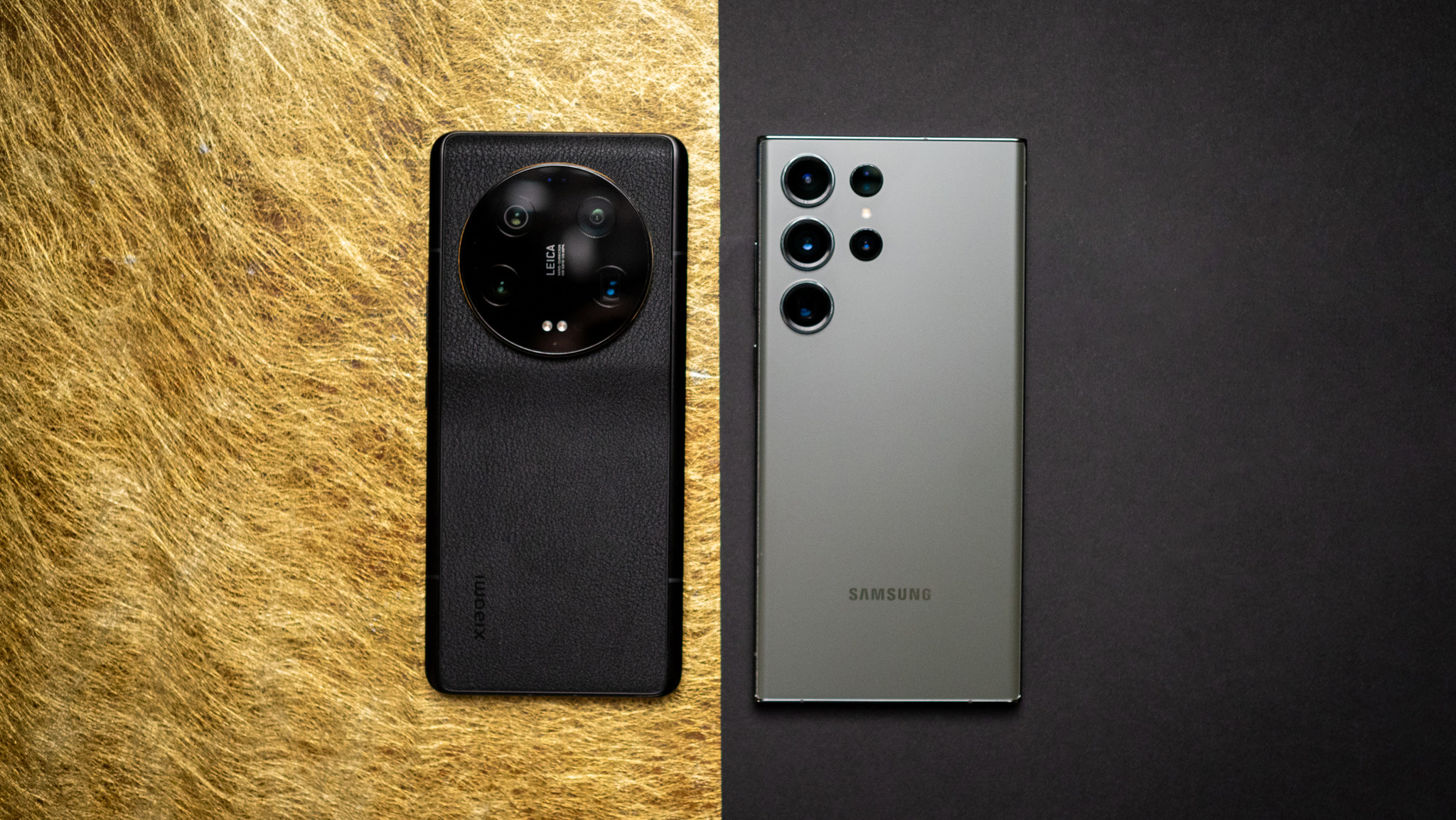
Xiaomi is going after Samsung with the Xiaomi 13 Ultra, so the S23 Ultra is the obvious alternative to the device. Samsung's 2023 flagship has a terrific screen, the latest internal hardware, outstanding cameras, long-lasting battery, and the most feature-rich software on Android. The width of the phone makes it a little unwieldy to use, but to Samsung's credit, the brand made noticeable tweaks to the design to make it easier to hold and use. The 13 Ultra manages to outdo the S23 Ultra in a few scenarios, but the biggest limitation is availability in key global markets, and the fact that it won't get as many software updates as Samsung's phone.
The Xiaomi 13 Pro is a decent choice as well, and while you miss out on the 5x lens, it delivers stellar photos and has a gorgeous design made out of ceramic. It's a bit more affordable than the 13 Ultra, and while it lacks the same kind of presence, it delivers most of the same features while costing €200 ($215) less.
Xiaomi 13 Ultra: Should you buy it?
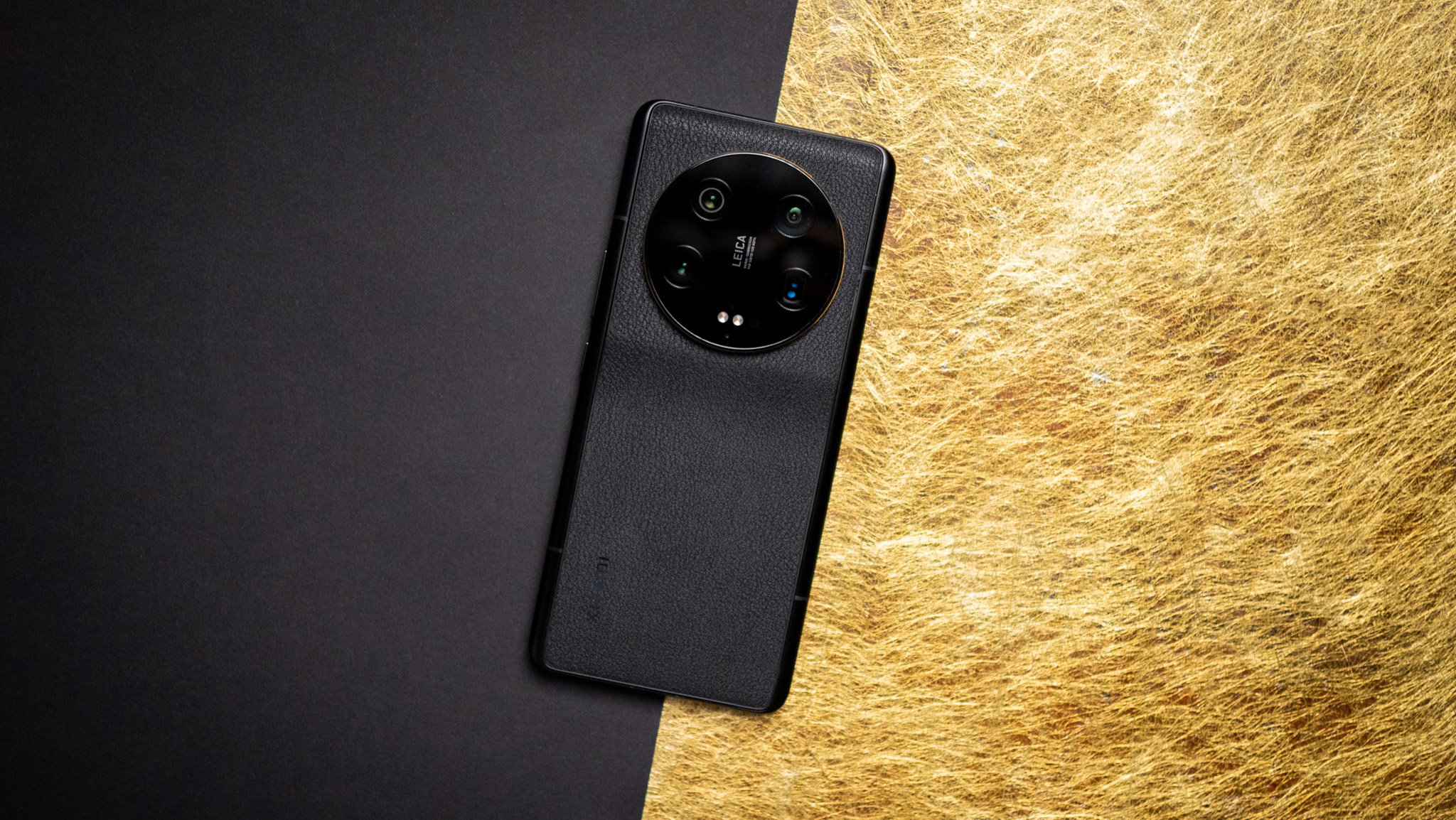
You should buy this if:
- You want a phone that can take on the Galaxy S23 Ultra but in a smaller size
- You need terrific primary and auxiliary cameras with lots of useful features
- You intend to shoot a lot of video
- You need excellent battery life and ultra-fast charging tech
- You want the latest internal hardware and all the extras
You shouldn't buy this if:
- You want the same number of software updates as the Galaxy S23 Ultra
- You live in North America or India
Xiaomi is throwing down the gauntlet with the Xiaomi 13 Ultra, and it is easily the best phone from the brand yet. It uses last year's Xiaomi 12S Ultra as a foundation but offers meaningful upgrades that give it a distinct edge, and the best part is that it is launching globally — albeit in a more selective list of regions than usual.
The main focus is obviously the cameras, and Xiaomi did all the right things in this area. By offering four 50MP lenses and plenty of shooting modes, the 13 Ultra manages to offer a level of versatility that you just don't get with any other phone today. The tweaks to the camera tuning have paid off dividends, and the caliber of shots you'll get out of this phone are among the best in the industry.
I also like the design quite a bit — renders don't do this phone justice. The screen, hardware, battery life, and charging tech are all top-notch, and ultimately, the only thing that holds the phone back is availability. While it is launching in global markets, the Xiaomi 13 Ultra isn't available in India or North America, and that makes it ineligible to a wide swathe of interested buyers. But if you're in a country where Xiaomi is officially selling the device, you should consider giving it a chance over the Galaxy S23 Ultra — I did, and I loved the results.
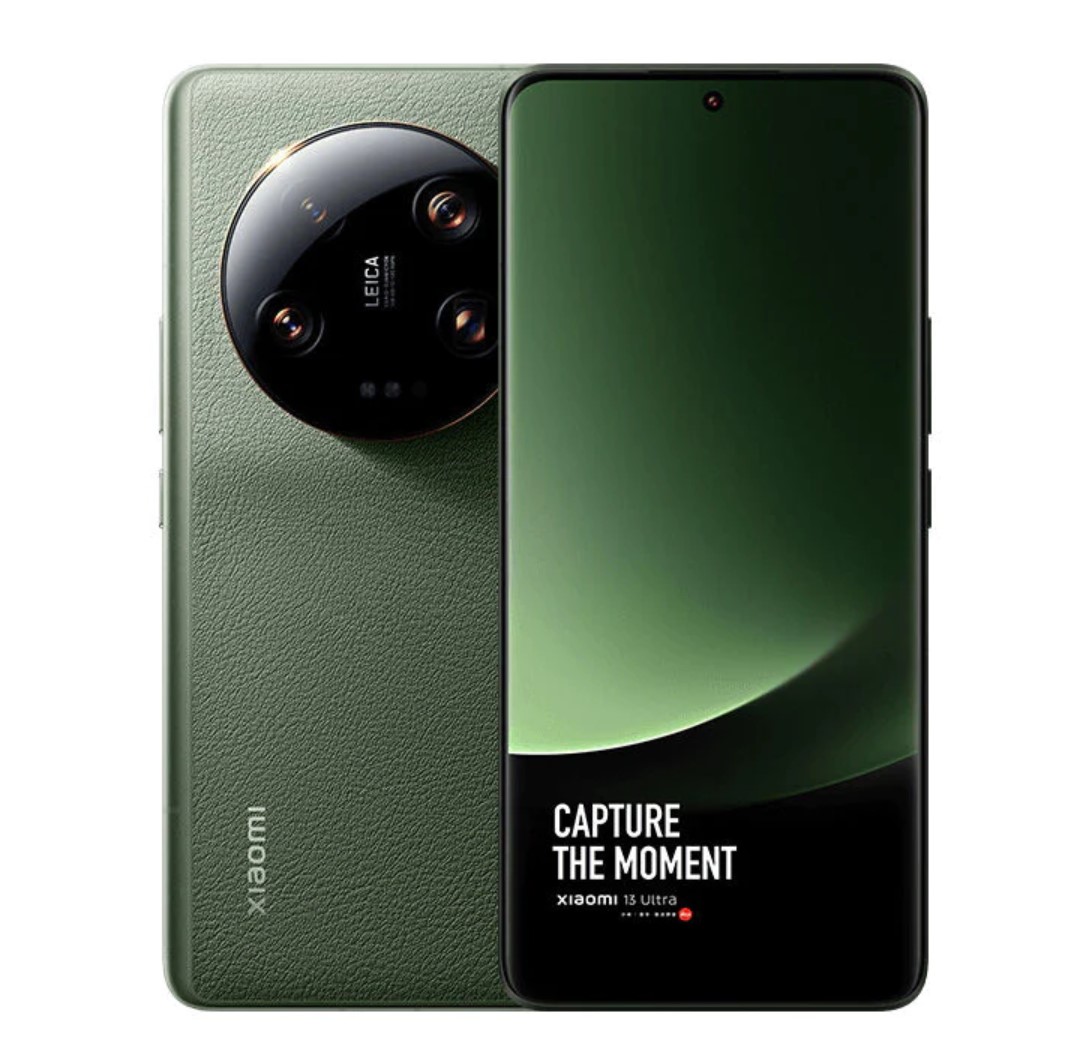
With quad 50MP cameras at the back and a gorgeous design, the Xiaomi 13 Ultra delivers one of the best overall packages you can buy today.

Harish Jonnalagadda is Android Central's Senior Editor overseeing mobile coverage. In his current role, he leads the site's coverage of Chinese phone brands, networking products, and AV gear. He has been testing phones for over a decade, and has extensive experience in mobile hardware and the global semiconductor industry. Contact him on Twitter at @chunkynerd.
